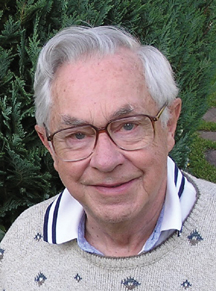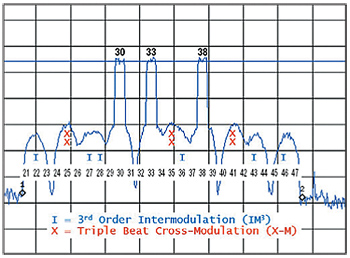Interference to DTV Reception

In closing my December column, I noted that "we have a problem to solve." Not wishing to spoil the Christmas season, I didn't go into the details. Let's start the year with the specifics assuming Feb. 18 will be the first day of terrestrial all-digital broadcasting in the United States, and incidentally, the first day on which the FCC allows sharing of broadcast spectrum with unlicensed devices. If you haven't downloaded FCC 08-260 from the FCC Web site, please do it. Those 100-plus pages cannot be properly condensed into my 1,500 word column, can they?
CHANNEL INTERFERENCE
Briefly, the FCC recognizes the technical impossibility of sharing on a co-channel basis. There won't be any co-channel interference (CCI) because its rules prohibit use of such channels by television broadband devices (TVBD) formerly referred to as white space devices.
Adjacent channels will be available for personal/portable device use only and restricted to 40 mW effective isotropic radiated power (EIRP), if operating on an adjacent channel. The FCC prohibits fixed devices from using adjacent channels until it has been proven to the satisfaction of the commission that spectrum sensing has progressed to the point where the commission deems the technique to be reliable and accurate. The implication is that the prohibition is temporary only.
Most of the "white spaces" are channels offset by more than one channel. These fixed facilities can radiate up to 4 watts EIRP, and portable/personal devices can radiate up to 100 mW EIRP. Interference to DTV reception by signals on what were once called UHF taboo channels, I will call "taboo channel interference" here.
Let's concentrate this month on fixed (location) TVBD. Four watts EIRP from an antenna not more than 30 meters above ground may have a line-of-sight to the rooftop DTV antennas of nearby residences. Where there is a line-of-sight direct path of 100 feet antenna to antenna, the received TVBD signal will be up to –14 dBm at the input to a DTV receiver, which is of course tuned to a DTV station on a channel offset from the TVBD signal by at least two and up to 25 channels (in the UHF band). I use this as a "yard stick" to analyze interference from TVBD signals into DTV.

Fig. 1: A spectrum plot showing an asymmetrical triplet of U signals on channels 30, 33 and 38. Another yard stick is to consider that at one mile, a 4 watt TVBD signal at a receiver will be up to –48 dBm. By definition the desired channel is always called N. Let's consider second adjacent channels, N+/–2. Let's see what happens one mile from the TVBD Tx. We know the undesired signal power is up to –48 dBm. Table A-9 of the FCC Report 07-TR-1003 March 30, 2007, showed that the median DTV receiver tested in the FCC Laboratory with D = D min + 3 dB (approximately –81 dBm) the threshold of interference from one DTV signal was about –42 dBm. I conclude that at one mile or maybe a little less, 50 percent of receivers will work. But I also conclude that almost 50 percent won't work under these conditions. But just how important is it that 50 percent of receivers 3 dB inside the noise-limited coverage area of the station work? This FCC report can help us understand this.
In Chapter 2, Fig. 2–3 shows that 29 percent of the noise-limited coverage area of a station has less than 3 dB signal margin. Is this 29 percent of a station's coverage area important to the community?
People in this 29 percent of the coverage area could in principle, install a low-noise pre-amplifier on their rooftop antenna, but how many will do so? In my opinion, if they know what to do, they still may not do it and just give up on over-the-air reception and become DBS or CATV subscribers. If they are really smart, they would replace their present antenna while someone is up on their rooftop. Antennas don't die; they simply corrode and fall apart. Besides, some really powerful antennas are now available to those willing and able to pay for them.
Getting back to the undesired signal at one mile, –48 dBm, the only way it can cause interference to a signal two or more channels away is by cross-modulating the desired DTV signal, which introduces noise in the desired channel. The noise power spectrum of the other third-order intermodulation product only extends by one channel from the undesired signal; it doesn't reach the desired channel (N+/–2 or greater), but cross-modulation (X-M) does. If any U signal reaches the mixer, it can generate X-M which can cause interference to every signal present at the mixer. Putting aside the one mile yard stick, let's return to the shorter yard stick, the 100 foot yard stick where the undesired signal is up to –14 dBm. Table A-9 of this FCC report shows that for a desired signal power of –68 dBm, the threshold of interference is –26 dBm for N+/–2. Clearly, even the best receiver cannot function with D at –68 dBm and one U at –14 dBm.

Fig. 2: An example of a typical asymmetrical triplet. Table A-10 for D = –53 dBm in the FCC report shows that the median receiver would function with about a 3 dB signal level margin. A single fixed TVBD on a channel offset by more than two channels would cause much less interference. Here is the strange thing about the FCC rules: They recognize that for adjacent channels, a 4 watt signal would cause widespread interference, so they prohibit use of adjacent channels by fixed devices. What they seem to have missed is that the FCC Laboratory found that interference to DTV reception is somewhat worse from an undesired signal on a second adjacent channel than for a first adjacent channel at Dmin + 3 dB. At higher D levels, the N+/–2 results are very similar to the N+/1 results.
Frequent readers of this column will recognize the spectrum plot of Fig. 1, which shows an asymmetrical triplet of undesired signals on channels 30, 33 and 38. Briefly, the third-order distortion products (IM3) are centered in channels 22, 27, 28, 36, 43 and 46. These peaks are shown and denoted by the capital letter "I" in blue. There are also triple beats (X-M) centered in channels 25, 35 and 41 in Fig. 1. These are denoted by the capital letter "X" in red. There are always two Xs to denote such channels because two beats fall in each of these channels. Their peaks are 3 dB higher than the peaks marked with "I." Each center frequency is surrounded by third-order distortion products on the adjacent channels. For example, the intermodulation on channels 22 and 46 are surrounded by distortion products on channels 21 and 23, as well as 45 and 47. Triple beats such as on channels 25, 35 and 41 are also surrounded by thirdorder distortion products.
As Fig. 1 shows every channel from 21 to 47 has third-order distortion products in it generated in the receiver by just these signals on channels 30, 33 and 38. Is this a freak triplet? No. Pick any set of three UHF channels and do the arithmetic. See the example in Fig. 2.
This is a typical asymmetrical triplet. Are asymmetrical triplets rare? No, consider for example 11 consecutive channels 30–41. If the first undesired signal is on channel 30 there are 10 possibilities for the second undesired channel; 31–41. So there are now 110 possibilities for the first two undesired channels, and there are nine possibilities for the third undesired. In this set of 11 channels, there are 990 possible triplets. Of these there can only be 11 symmetrical triplets. Symmetrical triplets are rare and less destructive than asymmetrical triplets.
Fig. 3 shows the results of measurements by this author to find the minimum usable desired power to overcome this triplet of undesired signals at –14 dBm average power each. The ATSC signal has a signal-to-noise threshold of 15.2 dB and a peak-to-average ratio of 6 dB. COFDM signals have somewhat higher peak-to-average power ratios—a safe value is 8.5 dB according to a simulation by my colleague, Linley Gumm.

Fig. 3: Minimum desired DTV signal to overcome interference from triplet on channels 30, 33 and 38. While my experiment used DTV signals, these undesired signals could have been from a nearby TVBD or they could be some combination of TVBD and DTV signals on those channels, each at –14 dBm average power. I believe that it is the peak power that generates third-order intermodulation products.
It should be clear from Fig. 3 that some DTV receivers may suffer from such interference when the desired signal is –53 dBm or less. The FCC Laboratory report shows that for any of the undesired channel pairs tested, this is true, and it can only be worse with triplets.
The device that I tested is an NTIA approved DTV downconverter chosen at random from what were available to the author. Six channels require –53 dBm of desired DTV signal power. According to Fig. 2–3 of the FCC Report, this is available in only 17 percent of the station's noise-limited coverage area assuming the receiver is fed by a directional rooftop antenna with 10 dBd gain and no signal splitter.
Triplets may be comprised of three TVBD signals, or three DTV signals, but the highest probability within a few years is for composite triplets of both DTV signals and TVBD signals especially in the UHF band. The FCC tested DTV receivers for undesired channel pairs of the N+K, N+2K from: N-10/N-5, to N+5/10. (K = an integer from –5 to +5). Those results, in my opinion justify looking further out from N. Even at K = 5, there was significant interference so further testing of consumer DTV receivers would be worthwhile. The limit is N-24/N-12 in the UHF band. In these tests the desired (DTV) signal was generated by a Rohde & Schwarz model SFU ATSC signal generator with a stored program of fish swimming and accompanied by music, which made making these threshold measurements possible. Thanks to Rohde & Schwarz for this assistance.
QUADRUPLETS OF U SIGNALS
Quads can be analyzed in a similar manner to that shown for triplets but all four signals must be within the same band and they must not be coherent, (i.e., from the same signal source). Perhaps I will go into this further sometime. Next month, we will look at the interference problems that may arise from the use of personal/portable TVBD under these (new) FCC rules.
My experiments convince me that third-order distortion products generated by a triplet of strong broadband signals from nearby TVBD radiating 4 watts may cause loss of DTV reception on any of a large number of channels. This interference mechanism is not recognized by the FCC as a significant threat to DTV reception. This is our problem.
Charlie Rhodes is a consultant in the field of television broadcast technologies and planning. He can be reached via e-mail atcwr@bootit.com.
The professional video industry's #1 source for news, trends and product and tech information. Sign up below.
